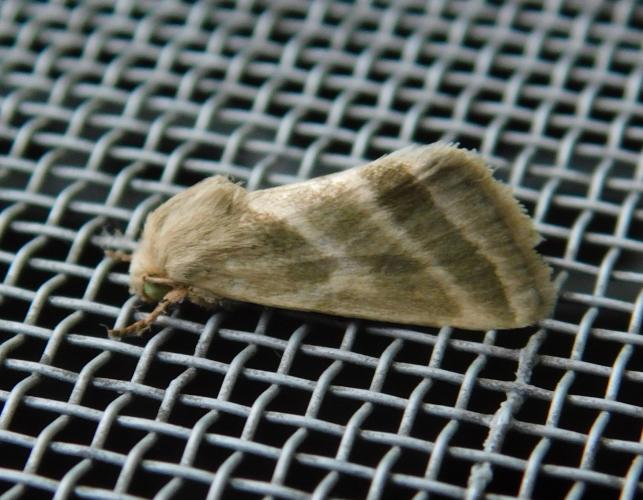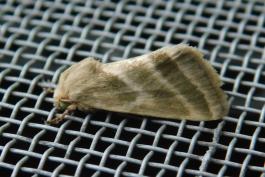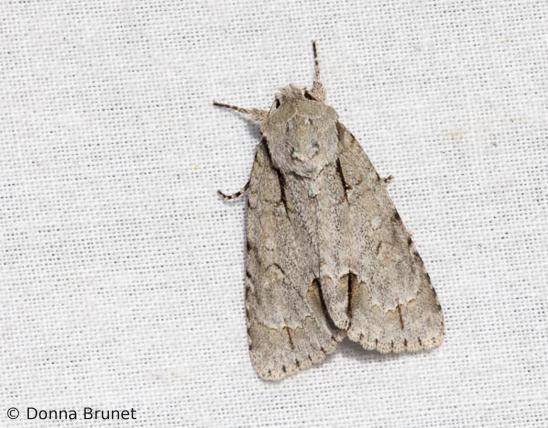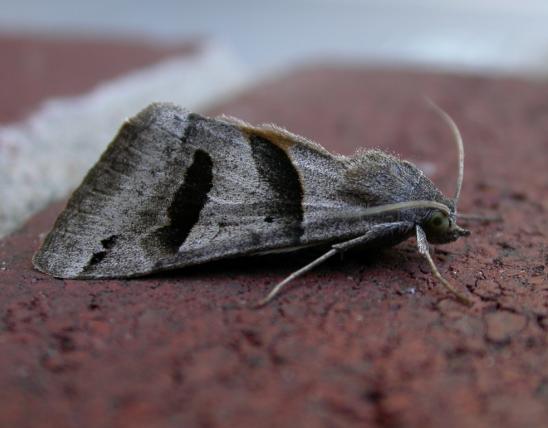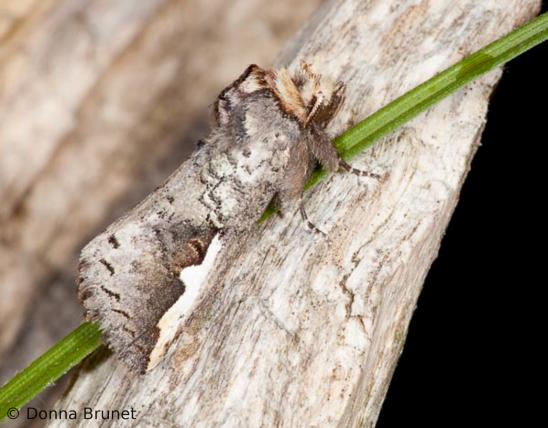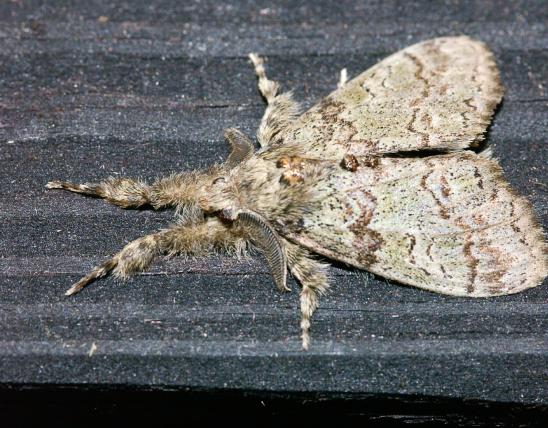
The three-lined flower moth is a locally common Missouri noctuid moth. Like other flower moths (Schinia spp.), its caterpillars eat the flowers and flower buds of their host plants. In this case, it's members of the thoroughwort tribe, including false bonesets, Joe-Pye weeds, thoroughworts, and blazing stars.
Overall forewing coloration is tan, grayish, or brownish, often with a greenish cast, so looking somewhat olive; the middle section of the wing is slightly paler. Three white lines run across the wing: the one closest to the head is sharply bent near the leading edge; the two other lines are nearly straight.
The caterpillars have many short, fine, bristles and have lengthwise tan or white stripes alternating with olive green or dark gray stripes. Coloration varies among individuals and life stage. A strong clue to the caterpillar's identity is the food plant.
For more information about this and other noctuid moths, visit their family page.
Similar species: In North America north of Mexico, there are about 125 species of flower moths (genus Schinia). Many flower moth species are brightly colored, which helps camouflage them against the flowers they rest on as they eat, mate, and lay eggs. The three-lined flower moth itself, with its drab tan coloration, looks a lot like many other kinds of nondescript moths, many of which are in the large noctuid or owlet moth family.
Wingspan: ¾–1¼.
Statewide.
Habitat and Conservation
Three-lined flower moths can be expected to occur anywhere you may find their caterpillar food plants, which in Missouri is potentially anywhere, since thoroughworts and their relatives are widespread and include somewhat weedy plants.
Adults may be attracted to lights at night.
Food
Like other flower moths, the caterpillars of this species eat the flower buds and flowers of their host plants; later, they eat the developing seeds of the plants. In the case of this species, the main food plants are false bonesets or brickell bushes (Brickellia spp.) and Joe-Pye weeds (Eutrochium spp.), though other members of the thoroughwort tribe of the sunflower family are apparently eaten, too. These may include our several species of thoroughworts or bonesets (Eupatorium spp.) and blazing stars (Liatris spp.) as well as mist flower (Conoclinium coelestinum) and possibly others.
Status
Breeding resident noctuid moth.
Life Cycle
Adults are present in Missouri from midsummer (July) until the frosts of autumn.
Human Connections
One of the fun things about learning moth identification is that it often leads you to learn about plants, as well. We humans love to make connections. Learning about the three-lined flower moth can introduce you to Joe-Pye weeds, and you may feel inspired to plant a spectacular clump or two of those native, pale purple wildflowers in your yard. In the end, maybe you won't see a three-lined flower moth caterpillar feeding on it, but the blooming Joe-Pye weeds will no doubt attract a wide variety of butterflies, bees, and other pollinators . . . and then you can learn about those insects!
Ecosystem Connections
The caterpillars of this species, by feeding on flowers and developing fruits, can put a dent in the reproduction of their food plants. Members of the thoroughwort tribe tend to have many florets per plant, and many species can form large colonies in an area, so the effects of the caterpillars serve as a natural biological control of these plant species.
The moths, in all stages of life, are eaten by numerous predators, including bats, birds, spiders, assassin bugs, mantids, and more.
